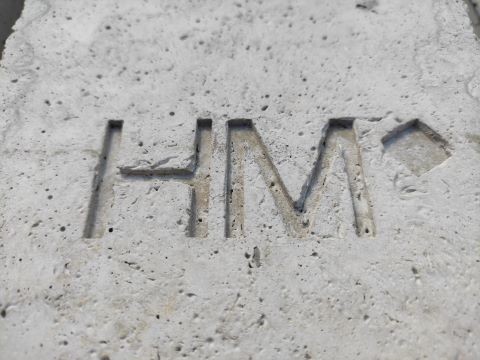CRUFI
Modelling of transient thermal and moisture performance of concrete structures and prediction of reinforcement corrosion in (recycled) concrete
In this project, the durability of concrete with and without chloride-containing recycled aggregate will be investigated at different exposures and under consideration of the CO2 binding capacity. Therefore, transient prediction models for reinforcement corrosion as a function of temperature, moisture, corrosivity and time will be developed.
Normally, the reinforcing steel is protected against corrosion due to the alkalinity of the concrete. When carbonation occurs, this protection can get lost. While carbonation is fast in dry concrete and much slower in a moist or wet concrete, corrosion behaves conversely. Whereas calculation models for carbonation are already available, they are missing for the transient prognosis of corrosion progress as a function of temperature, humidity, time and corrosivity of the concrete. Also detailed material properties for the time dependent liquid and vapour transport in the different areas of the concrete are required, as up to now effective properties for the transfer through the concrete layer seemed to be sufficient for the moisture resistant material.
To reduce demolition waste and limit sand and gravel mining, the use of recycled aggregates in concrete gains in importance. Therefore, also chloride-contaminated material shall be used, which hardly happens up to now due to the chloride-induced corrosion risk. However, under rather dry conditions (for example in interior walls) the use is expectable, at least when limiting the chloride concentration to an uncritical level. In addition, recycled concrete can capture high amounts of CO2, especially in case of crushed aggregates of the old concrete. However, this process can additionally increase the corrosion risk. Therefore, the use of recycled concrete with chlorides and accelerated carbonation requires a clear and reliable design and definition of the application areas.
Based on this investigations hygrothermal simulation tools and evaluation models will be developed which enable the prediction for any application and operation whether and to which extent, a corrosion risk of the reinforcement has to be feared, and how this can be prevented e.g. by changing assembly or materials or by adding coatings. For that purpose, normal, recycling and CO2 absorbing concretes are considered.
The new prediction possibilities will allow to avoid corrosion problems, develop cost efficient refurbishment measures and to extend the use of recycled concrete while improving the carbon footprint of concrete structures.
The consortium consists of the Trägerverein Institut für Holztechnologie Dresden e.V. which is responsible for the overall coordination of the project, the Fraunhofer Institute for Building Physics IBP, specialized in building physics and hygrothermal simulation, the University of Applied Sciences Munich with research focus on recycling concrete and corrosion, the FH Campus Wien, Austria with main field of interest in carbonation and CO2 binding of concrete and the Federal Centre for Technological Education of Minas Gerais, Brazil, as an expert in the field of supplementary cement materials for low CO2 concrete binders
| Research area: | Building Materials, Building Preservation |
| Responsible: | Prof. Dr.-Ing. Christoph Dauberschmidt |
| Prof. Dr.-Ing. Andrea Kustermann | |
| Duration: | 01.05.2022 - 30.04.2024 |
| Project partner: | Fraunhofer IBP (Germany) |
| FH Campus Wien CEFET MG (Austria) | |
| CEFET MG (Brazil) |
